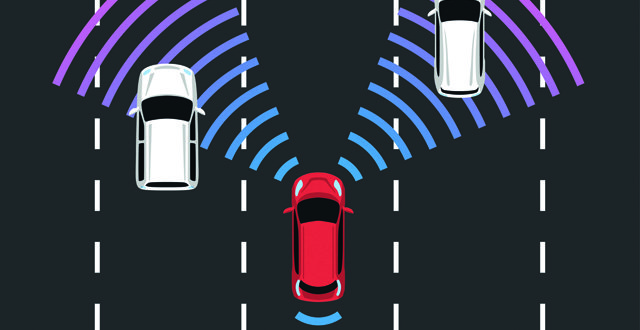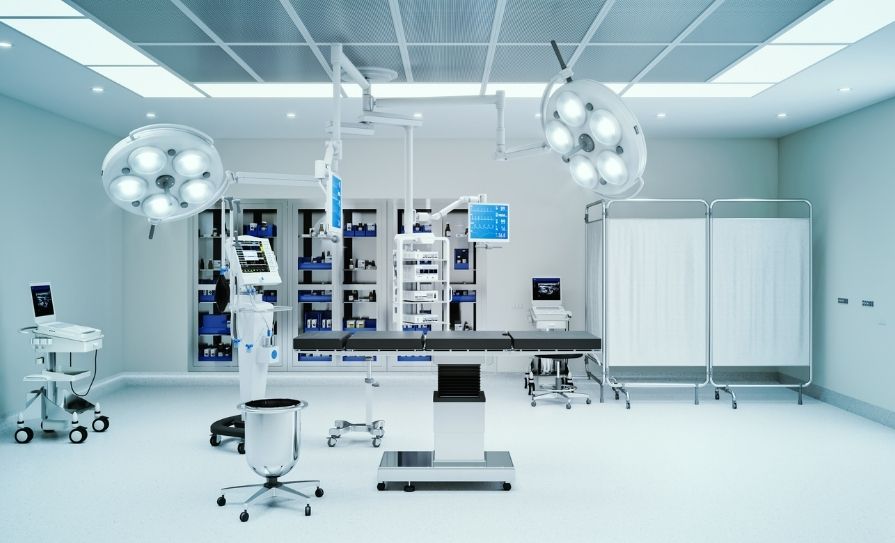International experts debate when and how self-driving, driverless or autonomous cars will become commonplace on our roads, but very few now question whether it will happen.
There might not be many on the roads at the moment, but that situation is expected to alter significantly in the coming decades.
On the ‘optimistic’ time-frame side, Mr Carlos Ghosn, CEO of the Renault Nissan Alliance, told <em>Bloomberg</em> in January that limited testing of self-driving cars is already taking place and he thinks they will “become increasingly visible in the next five years”.
A recent Road Safety Authority (RSA) conference held in Dublin on driverless car technology heard predictions of autonomous cars being on the road within the next decade.
Presently, self-driving cars when tested on public roads (predominately in the US) require the driver to monitor the car and be ready to take over the wheel if needed, but experts expect the technology to become increasingly autonomous in the coming years.
But there are also reasons to be cautious about these shorter predicted time-lines. In the UK, the London Assembly’s Transport Committee recently released a study that said the city would not be fully ready for driverless technology until the 2030s. In terms of international cities, London would be expected to be among the earliest adaptors of this technology.
Possibly most damaging of all to any rapid public roll-out of the technology was an incident in the US in March this year when a self-driving Uber SUV killed a female pedestrian in Arizona on a public road, sparking huge international media interest and debates over the safety of the technology.
With all the widespread speculation around how self-driving cars will impact our lives, one of the most fundamental changes it promises is surely in health.
Notwithstanding the fatal accident in Arizona, the possibility of much safer autonomous car technology has the obvious potential to significantly reduce the number of road deaths. This would in turn greatly reduce the pressure on trauma services. A recent survey of Irish trauma care found that traffic collisions accounted for 21 per cent of major trauma patients in Ireland (see panel on page 5).
Observers note that the cars also promise to be more efficient, which would potentially create a healthier environment, while others predict massive job losses in the transport sector, which could have negative mental and other health consequences.
Also, whether manual driving should be deemed unsafe and thus banned could become a controversial public health debate in the coming decades.
<h3 class=”subheadMIstyles”>Legislation</h3>
According to the RSA, “an autonomous car” (also referred to as a ‘driverless car’ or ‘self-driving car’) is a vehicle which is capable of detecting its surroundings through the use of Connected Intelligent Transport Systems (C-ITS) and drive without human input”.
The RSA published a new survey in conjunction with its recent conference, which showed that overall awareness of the concept of self-driving cars is high (73 per cent) among Irish adults.
Meanwhile, 36 per cent of Irish motorists believe self-driving cars will be on Irish roads within a decade. The research showed that 40 per cent of Irish adults believe self-driving cars are a ‘good idea’ — rising to 54 per cent in those under 25 years old.
There is a currently a connected and automated vehicle (CAV) technologies forum in this country hosted by the IDA Ireland and Enterprise Ireland.
It was set up as a stakeholder forum and involves stakeholders from research, industry and transport, including the Department of Transport, Tourism and Sport (DTTAS).
The Department told the <strong><em>Medical Independent</em></strong> (<strong><em>MI</em></strong>) that it is researching the area.
“The Department is currently scoping-out issues in the area to particularly facilitate both testing and longer term implementation of CAV. In addition, there are a number of research projects happening on CAV or linked to CAV by both industry and research organisations in Ireland. Many of these are in conjunction with other member states of the European Union,” said the spokesperson.
The spokesperson also told this newspaper that it will review legislation in light of recent developments in self-driving car technology.
“A review of road traffic legislation will be undertaken in DTTAS, when resources permit, to identify the implications for CAV; however, many of the legal requirements in relation to CAV will be advanced at a European level,” said the spokesperson.
<img src=”../attachments/f338a73e-9712-405e-b087-9fd1b9e48ea3.JPG” alt=”” />
<strong>Pictured L to R at the recent RSA conference on Connected and Autonomous</strong><br /><strong>Vehicles (back row): Mr Conor Faughnan; Mr John O’Mahony; Prof Oliver</strong><br /><strong>Carsten; Ms Liz O’Donnell; Ms Moyagh Murdock; Dr John McCarthy; Dr Charles</strong><br /><strong>Johnson; Prof Andrew Morris; (front row) Mr David Thomas; Dr Noah Goodall;</strong><br /><strong>Mr John McCarthy; and Dr Edward Jones</strong>
<h3 class=”subheadMIstyles”>Health benefit</h3>
GP and regular <strong><em>MI</em></strong> motoring correspondent Dr Alan Moran has mixed feelings when considering the possibility of an increasingly autonomous future on our roads. He admits as a lover of driving, “there is a sadness to the fact that driving will be changed, yes.”
“Personally, I prefer to drive (myself); I prefer to have control. Now, if my wife is sitting beside me, she would prefer that I didn’t because I can scare the bejaysus out of her at times.”
When it comes to self-driving automobiles, the car-loving doctor says he doesn’t know whether “we have reached that level yet where we can completely trust it. I know legislation [currently] says that we are not allowed to use it”.
Dr Moran says the technology is moving fast: “I do love the technology behind it.
“But yes, the technology is there to do it. The technology is already there that can land a plane on a runway [pilotless] and then bring it to the terminal.
“But among people who love to drive, there is complete reluctance, definitely. We like to think we have control.”
But removing his motoring expert hat for a moment and replacing it with his medical one, Dr Moran admits he can see obvious positive impacts from the onset of driverless cars.
“You have so many people dying every day [globally] from road traffic accidents,” he said.
In 2017, there were 157 fatalities on Irish roads. “You don’t hear about that,” Dr Moran commented. “But when one self-driving car causes one fatality, you certainly hear about it,” he said, referring to the recent Uber SUV fatal incident in Arizona.
“That is a bit biased. There are potentially a lot of safety aspects with it [autonomous cars]; there are a lot of positives. There is also huge scope for efficiency, because a self-driving car will drive more efficiently and use fuel more economically and stick to speed limits more than humans would.”
<h3 class=”subheadMIstyles”>Safety considerations</h3>
But still, envisioning the possibility of an increasingly autonomous driving future brings mixed feelings.
“I do love the driving. I also own a motorbike. I’d have three or four cars and three or four motorbikes if I had the chance. I have bicycles in the garage as well.
“I like to be able to be in control, or to feel I’m in control,” says Dr Moran.
“The other thing about a [road] accident, is that people always drive and think ‘but that will never happen to me’. Nobody goes out in the morning and thinks ‘God, I’m at risk of an accident’. So if you say to a lot of people ‘I can tell you that self-driving cars are safer’, they will say ‘sure, I’m driving 20 years and I have had no accidents’. It’s like smoking; people sometimes think ‘I’m the one who is not going to get lung cancer’.”
Dr Moran also notes that many self-driving cars will be electric and therefore almost silent, and that will have to be taken into account in terms of pedestrian safety.
<h3 class=”subheadMIstyles”>The US</h3>
It is probably unsurprising the US is at the forefront of development in automated driving technology.
Dr Noah Goodall, PhD, is a senior research scientist at the Virginia Transportation Research Council in the US. He visited Dublin recently to deliver a lecture on ‘Ethics of Connected and Automated Vehicles’ at the RSA self-driving event.
“The biggest public health benefit for vehicle automation will certainly be the reduction of deaths and injuries from vehicle crashes,” Dr Goodall tells <strong><em>MI</em></strong>.
“In 2015, 35,092 people died in vehicle crashes in the United States, and 2.4 million were injured. Of all 6.3 million crashes, 93 per cent were partly due to human error; 33 per cent were single-vehicle crashes; 36 per cent involved distracted drivers; 2.8 per cent involved drivers who fell asleep; and 2.1 per cent involved drivers experiencing heart attacks or other physical impairments.
“Automation should significantly reduce most of these types of crashes.”
However, looking into the future, there are also some possible negative health implications, warns Dr Goodall, which “would probably result from the expected job losses. Five million Americans are employed as drivers, and as I understand, unemployment negatively impacts health in many ways.”
In terms of future public health legislation debates, Dr Goodall says it is “very possible that manual driving on public roads will be prohibited, although this may be decades away”.
“When automated vehicles become far safer than even skilled, sober, attentive human drivers, then society’s baseline of acceptable ‘safe’ driving may increase to the point that an average human driver is considered as dangerous as a drunk driver today,” Dr Goodall tells this newspaper.
Road usage could also be altered significantly.
“One interesting use of automated vehicles that I’ve yet to hear mentioned is their ability to co-ordinate their driving,” says Dr Goodall.
“They could essentially turn a major surface street with traffic lights into a massive, multi-lane, short-term ‘freeway’ by squeezing together into a tight platoon, like a pack of cyclists passing in the Tour de France.
“A street could serve this platoon maybe once every 20 minutes for two or three minutes at a time. This would take a lot of pressure off freeways during rush hours, without the need to construct additional freeways into major urban centres.”
<img src=”../attachments/32da21d5-a29e-4652-8604-c7bc4da4286c.JPG” alt=”” />
<strong>Pictured L to R (Back row): Dr Noah Goodall, Research Scientist, Virginia</strong><br /><strong>Transportation Research Council; Mr David Thomas, Managing Director, Volvo Car</strong><br /><strong>Ireland Ltd; Prof Oliver Carsten, Professor of Transport Safety, University of Leeds,</strong><br /><strong>UK; Dr Edward Jones, Senior Lecturer in Electrical and Electronic Engineering and</strong><br /><strong>Director, Connaught Automotive Research (CAR) Group, NUI Galway; Prof Andrew</strong><br /><strong>Morris, Professor of Human Factors in Transport Safety, Loughborough</strong><br /><strong>University, UK; Dr Charles Johnson, Technical Director, CAS. (Front row) Mr John</strong><br /><strong>O’Mahony, Director, Behaviour & Attitudes; Mr Conor Faughnan, Director of</strong><br /><strong>Consumer Affairs, AA Ireland; Ms Liz O’Donnell, RSA Chairperson; Ms Moyagh</strong><br /><strong>Murdock, CEO, RSA; Dr John McCarthy, Leader for Intelligent Mobility; and Mr</strong><br /><strong>John McCarthy, Principal Officer, Department of Transport, Tourism and Sport</strong>
<h3 class=”subheadMIstyles”>Challenges</h3>
Prof Oliver Carsten, PhD, is Professor of Transport Safety at the University of Leeds in the UK. He also spoke at the RSA event on the topic of ‘CAV Development: Safety Potential and Safety Challenges’.
“The biggest [health] benefit is mobility and flexible mobility for those who currently lack it — the elderly, those with physical impairments, etc,” Prof Carsten tells <strong><em>MI</em></strong>.
“That could have a major impact in improving access to employment and to sociable activities. That in turn will lead to improved wellbeing.”
Prof Carsten adds that “the other benefit is likely to be on vehicle emissions”.
“It is expected that most or all driverless vehicles will be full electric vehicles, so there should be a substantial improvement in urban air quality with consequent health benefits.”
But when considering possible negative health impacts, Prof Carsten thinks there could be knock-on effects on some important chronic illness challenges.
“On the negative side, easy and cheap access to automated mobility could encourage pedestrians and cyclists to shift from healthy modes to being driven and hence could reduce exercise and increase obesity,” he adds.
Will there eventually be a public health push to legislate against manual driving on roads, once self-driving technology becomes widespread?
“Yes, but we are a long way off from that point. We would need driverless vehicles that can handle all situations,” he says.
“However, remember that we still have horses and horse-drawn vehicles permitted 120 years after the introduction of cars and trucks. We also allow motorcycles, even though motorcycle riding is more than 20 times as dangerous as driving a car.”
Assessing the current market, Dr Carsten says that if car companies more carefully adopt the “precautionary principle” when developing self-driving technology, then crashes should be preventable.
<h3 class=”subheadMIstyles”>Ireland</h3>
Irish experts working in the areas of medicine and traffic are also keeping one eye on the rapid developments in automated motoring.
Speaking to this newspaper in March, the Director of the Medical Bureau of Road Safety Prof Denis Cusack said the “concept of the driverless car may not be as far away as we think because technology has advanced so quickly”.
“But the driverless car, certainly in the early stages, will have to have a person in the car who is responsible for the car and who may have to intervene or take over in certain circumstances,” he told <strong><em>MI</em></strong>.
“I don’t know, maybe in 100 years’ time there will be absolutely no need for anybody other than a centralised station to be directing a car.”
While the Bureau knows this is coming down the road, there may be no need for major motoring legislative changes in the immediate future.
“So there is always going to have to be responsibility with some person and therefore that person is going to have to be competent,” Prof Cusack added.
“So I can’t see anybody getting in and saying, ‘I can drink as much as I want’ or ‘I can take as many drugs as I want because the car will do it all’. Because somebody in the car will have to be called upon to be available and take over.”
The DTTAS spokesperson also tells <strong><em>MI</em></strong> that “when considering amendments to road traffic legislation, particularly with respect to the provisions relating to driver licensing, it may be necessary to consult with the National [Programme] Office of Traffic Medicine (under the RCPI).
“However, as the legislation on driver licensing derives at an EU level, including medical fitness to drive, it is anticipated that such issues will be advanced at that level.”
Last year, Prof Des O’Neill, Director of the National Programme Office for Traffic Medicine at the RCPI, told <strong><em>MI</em></strong> there have been recent initiatives by state-level governments in the US, where traffic medicine expertise is being applied to driverless cars.
However, he said it was difficult to predict what impact that technology will have on society.
“If the automated cars came in, this could be very helpful, but it’s very hard to future-forecast this. For example, the originator of the car, Gottlieb Wilhelm Daimler, thought there would never be more than a million cars because that was the number of people who were trained as chauffeurs. So we have got to have humility about what the future may bring,” Prof O’Neill told <strong><em>MI</em></strong>.
“I think there are a lot of imponderables. I think it is something that could happen fast, or it could happen slowly.
“We [National Programme Office for Traffic Medicine] are actively looking at that area and keeping in touch with the International Transport Research Board on this issue.”
<div style=”background: #e8edf0; padding: 10px 15px; margin-bottom: 15px;”> <h3 class=”subheadMIstyles”>The trauma of the road</h3>
All experts agree that the most fundamental health impact the rise of autonomous car technology could have is on the large number of deaths and injuries caused by car accidents.
This will potentially change the future of trauma care.
In February this year, <em>A Trauma System for Ireland: Report of the Trauma Steering Group</em> was published. The details of the report found that motor accidents contributed in a large way to the trauma workload in Ireland (see below).
Progress on the implementation of this report is expected soon, this newspaper has been told.
The Department of Health told <strong><em>MI</em></strong>: “The HSE has now established [an] interim implementation group with Departmental representation, to commence the immediate actions, including recruitment of a National Clinical Lead, establishment of the National Office for Trauma Services, and selection of a Major Trauma Centre for Dublin. The group met for the first time on 12 April to begin consideration of these immediate actions.”
The spokesperson noted that this year, “funding has been provided for the appointment of a National Clinical Lead for Trauma and establishment of the National Office for Trauma Services to progress implementation”.
The Department spokesperson said future planning around trauma remains important.
“The trauma report notes that understanding the causes of injuries, the profile of trauma patients and the outcomes for patients is crucial, both for preventing trauma in the future, improving outcomes and planning for delivery of the necessary services,” said the spokesperson.
“Our understanding of trauma in Ireland has improved with the introduction of the Major Trauma Audit (MTA), which is implemented by the National Office of Clinical Audit (NOCA) using TARN methodology (Trauma Audit and Research Network in England and Wales).”
The Department spokesperson added that the MTA showed that road traffic accidents are a fundamental part of the demand for trauma care.
“There are many causes of injury in Ireland. In its first National Report (covering the years 2014 and 2015), the causes of injury recorded include falls, road trauma, interpersonal violence (blows, shooting, stabbing), burns, blasts, crush injuries and asphyxiation,” said the spokesperson.
“The two most common causes of injuries recorded by the Major Trauma Audit for 2014 and 2015 were falls and road traffic collisions. Low falls (falls of less than two metres) was the most frequent cause of injury, accounting for more than 50 per cent of Major Trauma Audit patients. This was followed by road traffic collisions, which accounted for 21 per cent of patients.”<strong><em> </em></strong>
</div>













Leave a Reply
You must be logged in to post a comment.